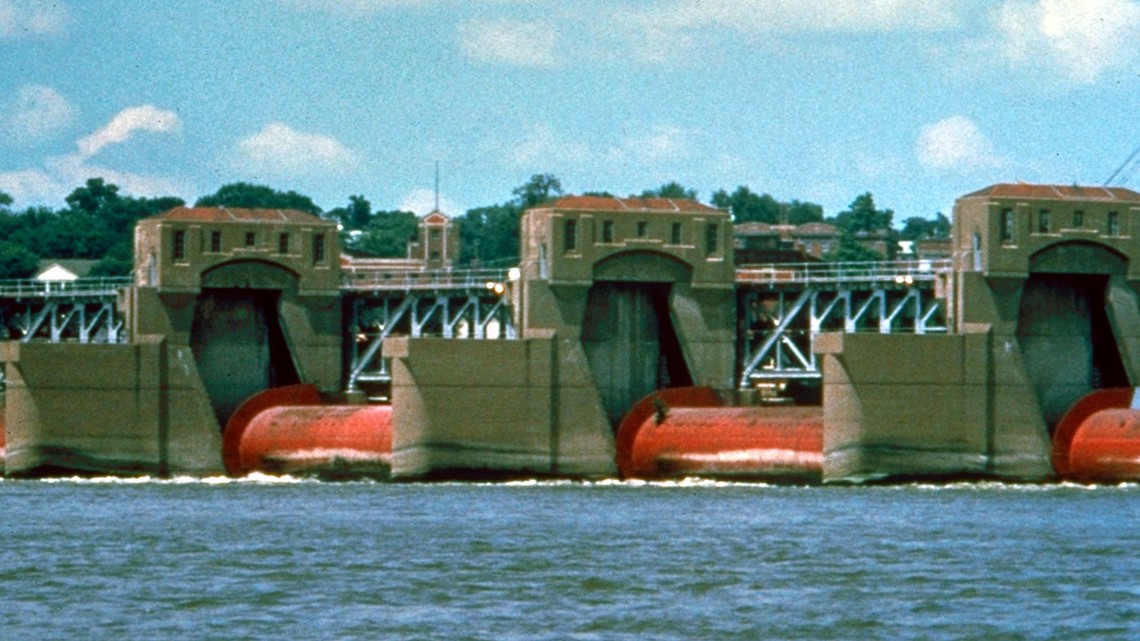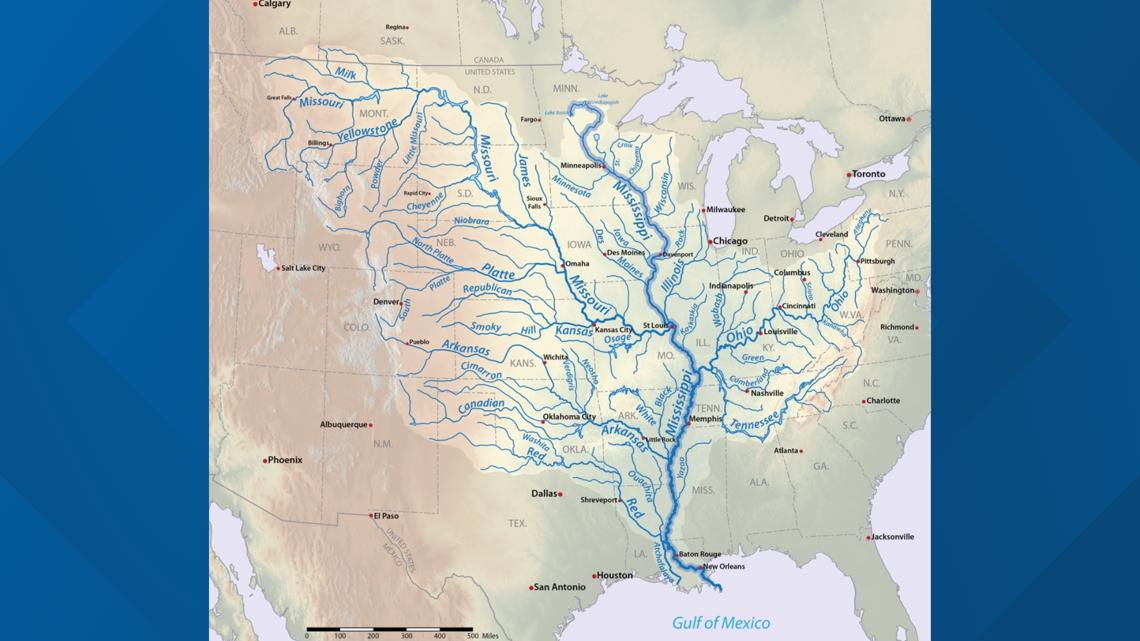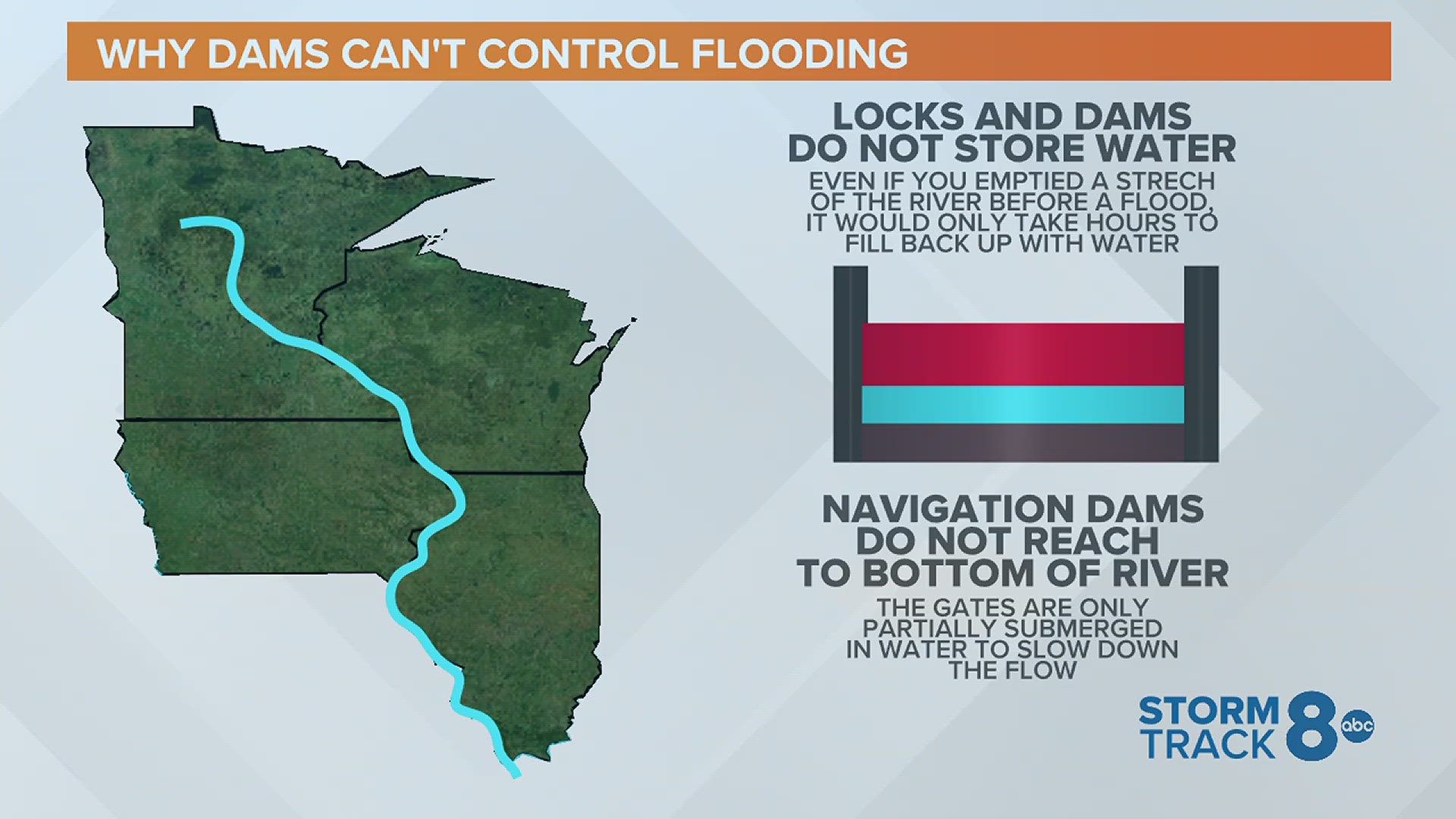ROCK ISLAND ARSENAL, Ill. — Each spring season presents its fair share of challenges from Mother Nature. Severe weather, tornadoes and, of course, one of the biggest beasts of them all, flooding. The record flood on the Mississippi River in May of 2019 reminded us how powerful a body of water can be and any attempts to hold it back can fail, big time.
Along the Mississippi River, there are a series of locks and dams. While it may appear those dams have the capability of easily controlling the level of water that sits before them, that simply isn't the case when it comes to an elevated river during a flood. This is a question that our local U.S. Army Corps of Engineers in Rock Island will get nearly every spring season as river levels begin to rise. So, now is a good opportunity to explain why this is the case.


The type of dam established along the river is known as a navigational dam. This type of dam does not reach all of the way down to the bottom of the river floor. It is not designed to hold, or pool water for storage behind it. Rather, it is designed to maintain a specific level of water so that traffic can continue to flow along the river.
So, why not just open the gates weeks and months ahead of time to artificially lower the river in advance of an anticipated flood?
A study by the Iowa Institute for Hydraulic Research at the University of Iowa in 1969 confirmed that lowering the pool level ahead of time would not impact the severity of flooding. In fact, the lower pool levels would quickly elevate again in just a matter of hours.
Similarly, in the spring of 2011, the gates of the dams below the Quad Cities were raised out of the river beginning in February. Later in March, the gates were raised at other dams downstream all the way to Saverton, Missouri. During this time period, the river flowed without restriction, yet it continued to rise in the Quad Cities cresting at 20.7 feet on April 23, 2011. This is further proof that just simply raising all the gates won't limit the potential impacts of flooding.


Another factor to consider is the number of rivers that contribute water to the Mississippi River itself. From the Rock River to the Iowa River, there are at least 250 tributary rivers that flow into the Mississippi River. That's a lot of water coming in from all over the place!
The bottom line, the dams in place here in the Quad Cities are NOT made for flood control, period. I encourage you to check out the U.S. Army Corps of Engineers' page, here, which has even more reasons why our dams are not meant for flood control. It's a really good read and they also go into the dredging process, too!
Have a question that you would like me to answer for an upcoming Ask Andrew segment? Submit it, here!

